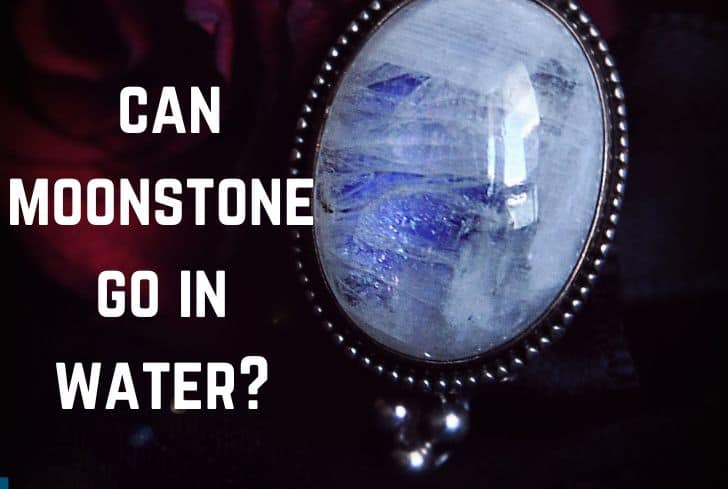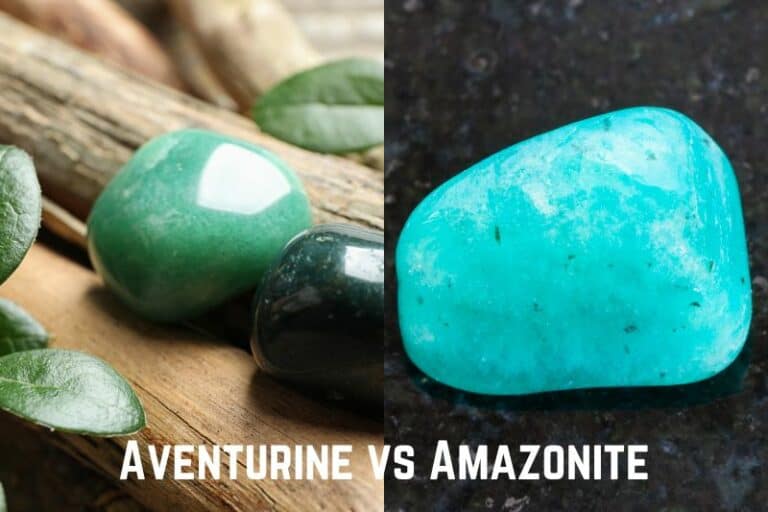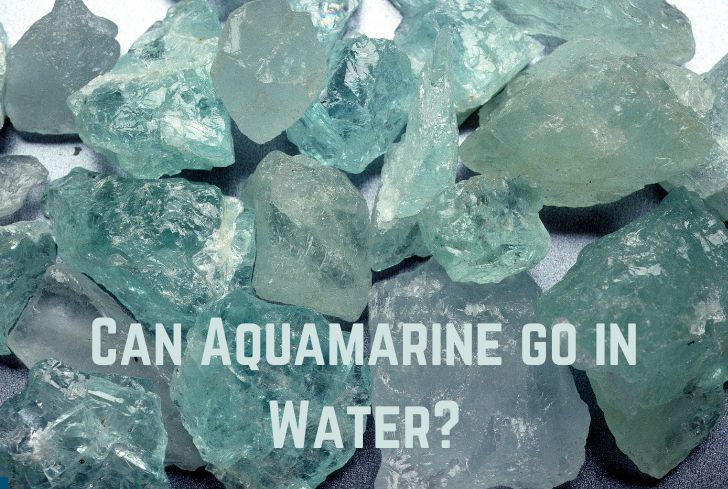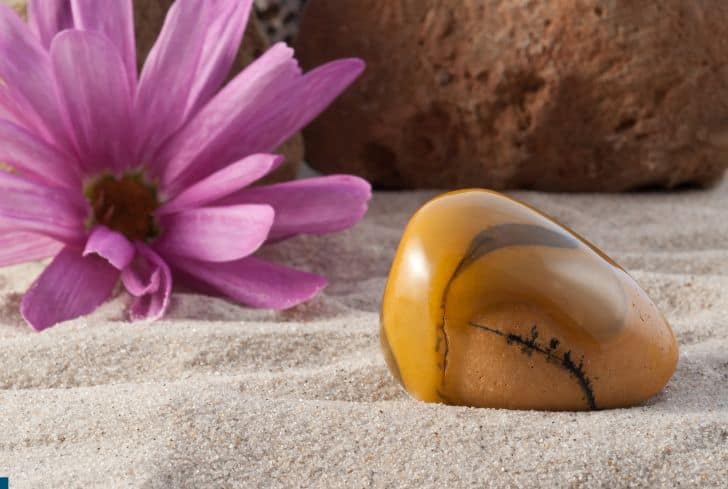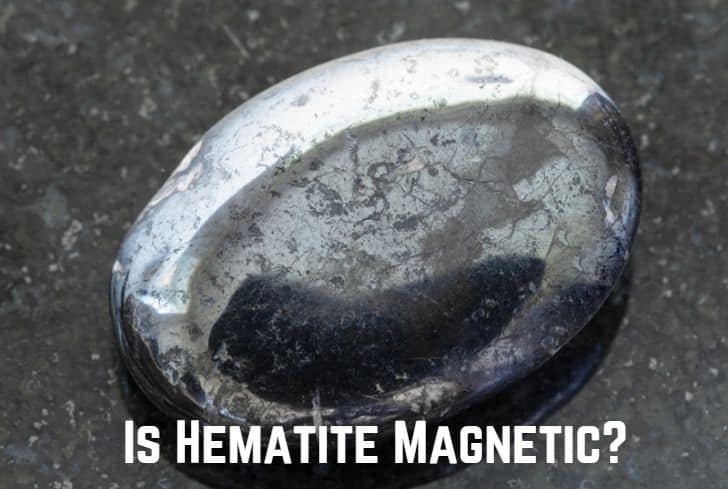Jasper vs Agate (Are They Different or Same?)
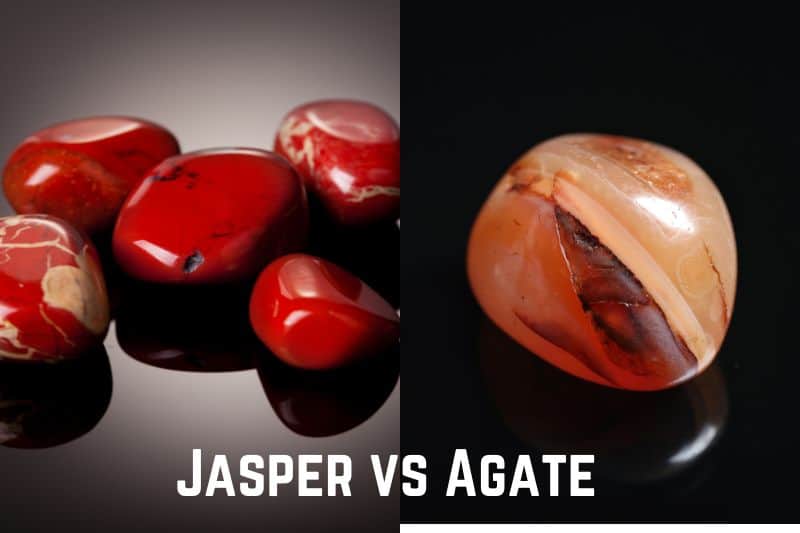
Jasper and Agate are two of the most common stones used in rock tumbling (a process used to smooth and polish rocks). This is because both of them are affordable, come in a wide variety of colorful patterns, and most importantly, are durable enough for a tumbler.
In this article, we are going to discuss the difference between Jasper and Agate. We will begin by talking about how agate and jasper are formed. Then we will learn about their different properties. Finally, we will learn how to take care of them.
Read: Can Red Jasper Go in the Water? (And Salt Water?)
Are Agate and Jasper the same?
Agate and Jasper are two varieties of the mineral chalcedony. Diaphaneity, that is, how light passes through an object, is the primary difference between them.
Chalcedony is a cryptocrystalline form of silica (silicon dioxide); it is made up of very fine intergrowths of quartz and moganite. Chalcedony’s chemical structure is based on that of quartz: SiO2 (silicon dioxide).
By cryptocrystalline, we mean that the crystals of chalcedony (made up of quartz) are so small that they are only visible through a microscope. Other types of quartz have much bigger crystals, which are often many inches or feet large.
Chalcedony is quite a hard and durable mineral, having a value of 7.0 on the Mohs Hardness Scale. This scale is a way of determining a mineral’s hardness by measuring its resistance to scratching relative to other minerals.
Chalcedony breaks with a conchoidal fracture; when broken, its pieces often have smooth, curved surfaces. These broken pieces have a dull/waxy luster, unlike quartz, whose pieces have a shiny, vitreous luster.
This is because chalcedony is cryptocrystalline in nature. When it fractures, the fractures seep through thousands of quartz microcrystals. Each of the crystal boundaries gets disturbed, which causes them to develop slight irregularities. Now, when light hits these surfaces, it gets scattered instead of being reflected, and hence there is a dull/waxy luster.
Agate and Jasper are both different kinds of this mineral we have been discussing, chalcedony. What distinguishes them is their diaphaneity. Diaphaneity refers to how easily light passes through an object. It can be of three types:
- Opaque: No light passes through the object
- Translucent: Some light passes through the object.
- Transparent: Both light & images pass through the object.
Agate is a type of chalcedony that is translucent to semi-transparent. Jasper, on the other hand, is an opaque kind of chalcedony. So, if you have a piece of chalcedony, you can quickly determine whether it’s agate or jasper based on how light passes through it.
However, sometimes, it can be difficult to gauge the difference between translucent and opaque. A few stones also have translucent as well as opaque zones. In such cases, we simply call the stone “jaspagate” or “jasper-agate” since it has properties of both.
What is Agate?
Agate is a translucent to semitransparent variety of chalcedony. It comes in various colors, and its use in jewelry goes back to the 3rd millennium BC.

Agate is a banded variety of chalcedony: it often has multi-colored curved or angular banding. Some specific types of agates exhibit unique features. For example, fire agate demonstrates iridescent phenomena on a brown background. Iris agate also shows iridescence when pinpointed light is shone through the stone.
If a piece of chalcedony has bands, it is most likely an agate. However, not all agates have obvious bands. Some translucent agates can have plume-shaped, dendritic, or mossy inclusions, making them difficult to identify.
In Ancient Greece, agate was quite popular as an ornament: it was used in assorted jewelry and the seal stones of Greek warriors. In the Indus Valley Civilization, bead necklaces made up of pierced and polished agate have existed as far back as the 3rd millennium BC.
How Does Agate Form?
Agates are most commonly found as nodules within the cavities of volcanic rocks. These cavities get filled with silica-rich fluids from the volcanic material and then layers are deposited on the walls.
The silica gel slowly crystallizes to form microcrystalline quartz. Over time, more layers of gel are deposited, and they form younger bands of microcrystalline quartz on the walls. Often impurities (elements other than silicon or oxygen) get included in the silica gel and into the microcrystalline quartz.
These impurities often change the color of the material, resulting in the bands for which agate is known. These foreign materials are also responsible for the plumes, dendrites, or mossy structures that are visible in translucent quartz.
Agate usually forms in igneous rocks (such as basalt and rhyolite) but can also form in sedimentary rocks like limestone. Such rocks are more susceptible to weathering than agate, so agate remains even after they break down. This is why agate nodules are often found in stream valleys.
Read: 13+ Different Types of Green Rocks and Minerals (+Pics)
What is Jasper?
Jasper is a kind of cryptocrystalline quartz. It is an opaque, impure variety of silica (silicon dioxide, SiO2), and is usually red due to iron impurities. It is found all over the world, although certain colors or patterns may be unique to particular locales.

Jasper gets its name comes from the Old French word jaspre, meaning “spotted/speckled stone”. It is a type of chalcedony that is opaque, so no light passes through it. Jasper is usually red, brown, or green, and rarely blue.
Jasper is widely used as a gemstone or for ornamentation. Thanks to its ability to be highly polished, jasper is often used to create vases, seals, and snuff boxes. In the 4th and 5th millennium BC, it was used to make bow drills in Mehrgarh.
How does Jasper form?
Jasper is a rock that is formed from the mineral content of sediments or ash. When fine particulate materials are cemented by silica, it leads to the creation of jasper.
Jasper is formed when volcanic ash or fine pyroclastics get cemented into a solid material from the precipitation of silica. Sometimes, the cementation process is so strong that it turns the sediment or ash into microcrystalline quartz.
The particulate materials are what give jasper its color and opacity. Hydrothermal circulation is often required for the formation of jasper. The diffusion of other minerals along discontinuities gives jasper the appearance of vegetative growth. These other minerals combine into jasper, and weathering eventually creates intensely colored superficial rinds.
Chemical Composition
Jasper and agate are both types of chalcedony. But their formation and presence of impurities are what makes them different.
Both jasper and agate are chalcedony types, a microcrystalline quartz. However, their formation and impurities are what make them different in terms of diaphaneity (how light passes through them).
Agate forms within cavities of rock, as a result of volcanic activity. Silica-rich groundwater seeps into these cavities and deposits layers of microcrystalline quartz. These layers often contain impurities, which give agate its distinctive colorful bands/patterns. Ultimately, this process creates a translucent stone, which we call agate.
On the other hand, Jasper is formed from volcanic ash or sediment that has undergone significant heat and pressure. During this process, impurities like clay and organic material get trapped within the silica-rich solution and cause the stone to become opaque.
Color, Pattern, and Clarity
Jasper and agate come in a variety of different colors and patterns. Their primary differentiator is their diaphaneity- how light passes through them.
Agate comes in various colors, including blue, green, pink, etc. It is popular for its banding patterns, which can be straight, curved, or irregular. Agate can also exhibit other beautiful patterns, say moss-like inclusions, or dendritic formations (resembling vegetative growth).
Jasper is usually red, yellow, brown, or green; in rare cases, it can also be blue. The most common color in jasper is red, due to iron (III) inclusions. Jasper is completely opaque, while agate is translucent.
We must remember that often jasper and agate can be hard to distinguish. As discussed earlier, some stones may show the properties of both of them. In such cases, we simply call them “jaspagate” or “jasper-agate”.
Hardness
Since jasper and agate are types of the same mineral (chalcedony), they have the same level of hardness.
The Mohs Hardness Scale determines a mineral’s hardness by measuring its scratch resistance against other minerals. Both jasper and agate—being types of the same mineral—have a value of 6.5 to 7.0 on the Mohs Hardness Scale.
This means that they have a decent level of hardness, which is why they are good for jewelry. It also indicates that they are safe in water: any mineral having a value over 5.0 can be immersed safely.
Location
Both jasper and agate are found in various locations throughout the world. Their abundance is also what makes them quite affordable.
Agate is found in countries like Brazil, Uruguay, and Mexico. On the other hand, Jasper has deposits in the United States (particularly in Arizona and Wyoming), Germany, and Australia.
Certain variants are specific to some locations. These often influence the name of the variant as well. For example, Morrisonite is a type of jasper that comes from Oregon (USA), named after James Morrison whose ranch was the source of the mineral.
Read: Alexandrite vs Amethyst (Properties & Composition)
Care
Since both the stones are safe to go in the water, follow these steps to clean them:
- Mix a soft detergent/soap with lukewarm water.
- Immerse the stone in it for a few minutes, cleaning the crevices with a soft brush.
- Rinse the stone under running water and ensure that no excess soap remains.
- Let the stone air dry. Make sure you flip it a few times to get all water out of the crevices.
Avoid getting the stones in contact with other stones as they can get scratched. Also, try to keep them away from harsh chemicals.
Conclusion
In this article, we have looked at the differences between jasper and agate. Both of them are types of the same mineral, chalcedony, which is why they share some properties like hardness. However, their formation and impurities also create differences: jasper is opaque while agate is translucent.

